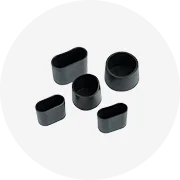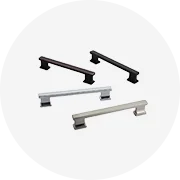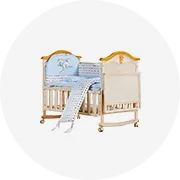
Competitive Price Outdoor Furniture Dining Chair Modern Style Wood Outdoor Furnishings Garden Chair Made In Vietnam Factory


Cane Design Chair Furniture Modern Rattan Chair Outdoor Restaurant Cafe Bistro Dining Room Plastic Chair















Cane chairs, a symbol of elegance and durability, have evolved from their humble beginnings in Asia and Africa to become a staple in modern furniture design. This article explores the rich history of cane chairs, their transition from traditional to modern designs, and the innovative ways they are being used today. We delve into the various styles associated with different eras, the influence of technology on cane furniture, and the role of cane chairs in sustainable furniture production. Join us as we journey through the evolution of cane chairs, a perfect blend of tradition and innovation.
Cane furniture has a rich history, originating from Asia and Africa, and has been used since ancient times. The material, derived from the rattan plant, was woven into furniture and introduced to Europe in the 1660s due to vibrant trade with Asia. The popularity of cane furniture led to a manufacturing boom in Europe, lasting through the 18th century. In the 19th century, cane furniture became popular in Dutch and English colonial furniture, thanks to its durability and resistance to high humidity. The rise of the cane chair transformed the furniture industry, offering a lighter, less formal alternative to solid wood and upholstered chairs.
Cane chairs have a rich history, with various styles associated with different eras. Styles such as Elizabethan, Early American, Queen Anne, Rococo, and Victorian, among others, have distinct characteristics that help identify their age. For instance, the Victorian era chair, around 110-120 years old, is known for its excellent condition and cane work. The Art Deco style, popular in the 1925-1940s, often features bent wood armchairs with cane backrests. Each style reflects the craftsmanship and design aesthetics of its time, making antique cane chairs valuable and sought-after pieces.
During the 1800s, cane chairs were mainly associated with English colonial furniture and were the go-to seating option for cafes. The design was revolutionized with a curved beechwood frame and round caned seat, giving them a more modern look. Cane chairs weigh significantly less than wooden or upholstered chairs, making them easier to transport. They are also resistant to different climates, making them popular in places with high humidity. The popularity of cane-back restaurant chairs has risen recently. These chairs are perceived as innovative, modern pieces of furniture that fit with any décor and elevate the ambiance of every venue.
Modern cane furniture, including chairs, is a testament to innovation. Its lightweight, sturdy nature, and relatively lower cost make it a preferred alternative to wooden furniture. The pliable nature of cane allows for the creation of curvaceous, arresting silhouettes, bringing a touch of casual style to any setting. Cane furniture is also an environmentally-friendly option due to the fast-growing nature of the rattan palm from which it is derived. Today, cane chairs are seen in various forms, from headboards to bentwood dining chairs, showcasing the blend of tradition and innovation.
Several furniture companies are revolutionizing the cane furniture industry by blending traditional artistry with modern technology. These companies create custom-made cane furniture that perfectly suits both traditional and contemporary interiors. The flexible nature of cane is an added advantage as the furniture pieces can be easily customized. This innovative approach to furniture design is a testament to the influence of technology on traditional crafts, pushing the boundaries of what is possible with cane furniture.
Modern cane chairs blend seamlessly with various decor styles, from traditional to contemporary, in diverse environments. The elegance and practicality of these chairs have been praised by many, highlighting their aesthetic appeal. The range of cane seating includes casual coastal pieces, country chair styles, Scandinavian style chairs inspired by mid-century modern influences, and elegant cane chairs suitable for urban applications. This versatility and adaptability make modern cane chairs a staple in today's design aesthetics.
Handcrafted cane furniture is a testament to sustainable practices in the furniture industry. These pieces are made using centuries-old traditional weaving methods. The materials are hand-harvested with sustainable techniques, ensuring minimal environmental impact. Each sale supports local artisans, bringing trade to communities in need. This unique, eco-friendly furniture not only adds charm to your space but also contributes to a sustainable future.
Cane chairs, particularly those produced by various manufacturers, play a significant role in sustainable furniture. These companies, major producers of rattan furniture, have sustainability at their core. Rattan, a rapidly growing natural raw material, is harvested by hand in an eco-friendly manner. This traditional craft contributes to the UN's Sustainable Development Goals and 'going green' initiatives. Their commitment to sustainability extends to their transportation methods, aiming to minimize environmental impact. Their approach aligns with UN’s Sustainable World Goal 12, demonstrating a proactive initiative to protect the environment.
Cane chairs have come a long way from their origins in Asia and Africa, evolving into a versatile and sustainable choice in modern furniture design. Their journey from traditional designs to modern aesthetics is a testament to the adaptability and enduring appeal of this material. Today, cane chairs are not just about style and comfort; they also represent a commitment to sustainability and eco-friendliness. Various companies are pushing the boundaries of what's possible with cane, blending traditional craftsmanship with modern technology and sustainable practices. In essence, modern cane chairs embody a perfect blend of tradition, innovation, and sustainability, making them an ideal choice for the conscious consumer.